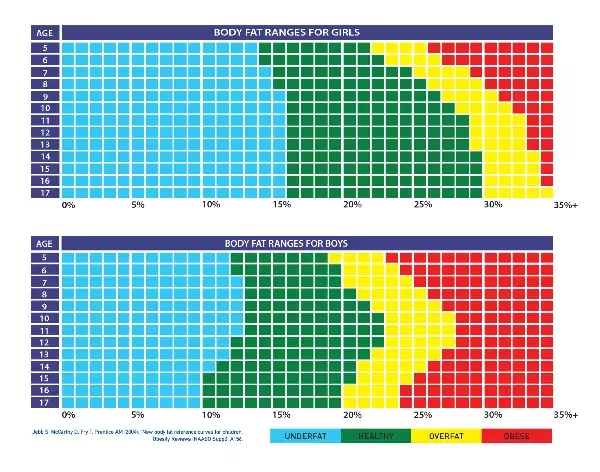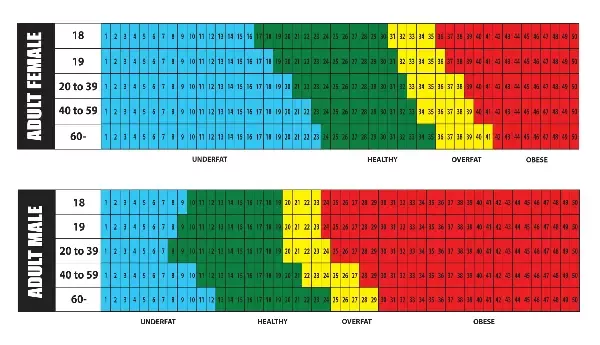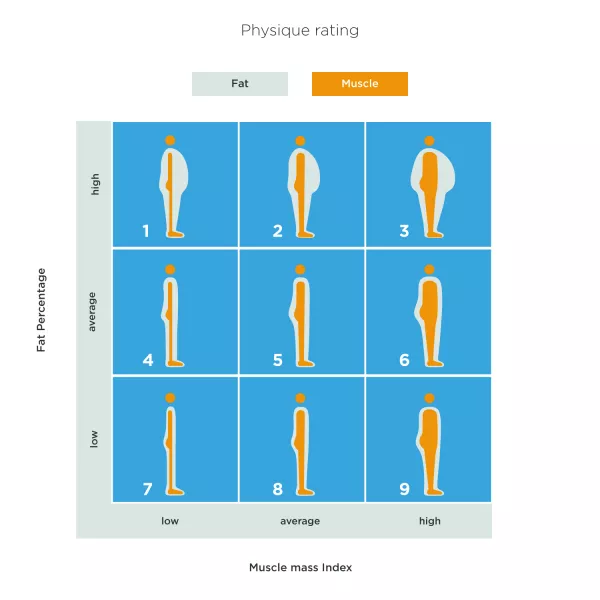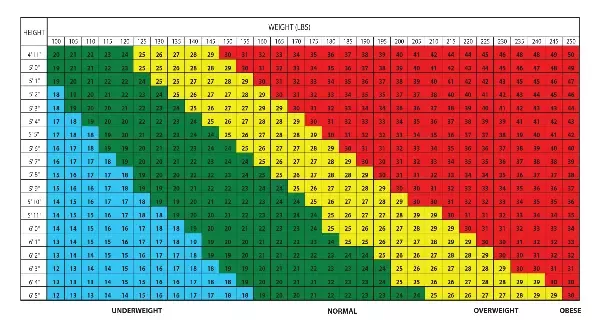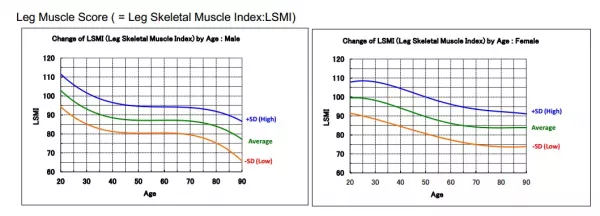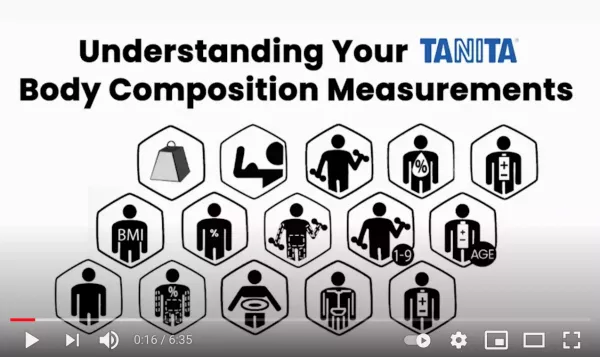
Click above to play video or click here.
Time to find out what you're made of.
Tanita monitors bring you fast, accurate body composition results using the latest advanced bio-electrical impedance analysis (BIA) technology first developed by Tanita in 1992. This gives you a true indicator of your inner health and, when monitored over time, can show the impact of any fitness regime or weight loss program.
So find out exactly what you are made of, set your goals and use Tanita to help you achieve your optimal fitness level and improve your health and wellbeing.
Body Fat Percentage and Body Fat Mass
Body Fat Percentage is the proportion of fat to the total body weight. Body Fat Mass is the actual weight of fat in your body.
Body fat is essential for maintaining body temperature, cushioning joints and protecting internal organs.
The energy, or calories, our body needs comes from what we eat and drink. Energy is burned through physical activity and general bodily functions. If you consume the same number of calories as you burn, all the calories are converted into energy. But if you consume more than you burn, excess calories are stored in fat cells. If this stored fat is not converted into energy later, it creates excess body fat.
Too much fat can damage your long-term health. Reducing excess levels of body fat has been shown to directly reduce the risk of certain conditions such as high blood pressure, heart disease, type 2 diabetes and certain cancers.
Too little body fat may lead to osteoporosis in later years, irregular periods in women and possible infertility.
It is important to check your body fat results against the Tanita healthy body fat ranges. These measurements are available for everyone from age five to 99 years.
Visceral FatVisceral fat is located deep in the core abdominal area, surrounding and protecting the vital organs. Even if your weight and body fat remains constant, as you get older the distribution of fat changes and is more likely to shift to the abdominal area. Ensuring you have a healthy level of visceral fat directly reduces the risk of certain diseases such as heart disease, high blood pressure and may delay the onset of type 2 diabetes. | 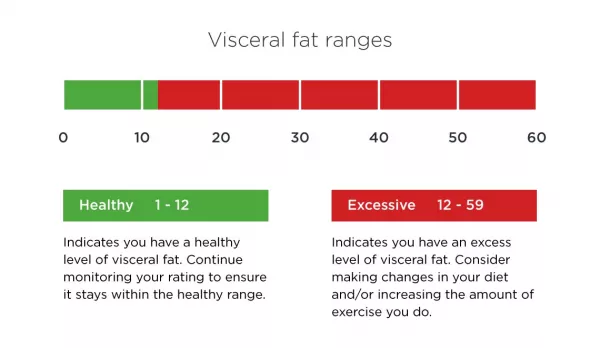 |
Muscle Mass
The predicted weight of muscle in your body.
Muscle mass includes the skeletal muscles, smooth muscles such as cardiac and digestive muscles and the water contained in these muscles. Muscles act as an engine in consuming energy.
As your muscle mass increases, the rate at which you burn energy (calories) increases which accelerates your basal metabolic rate (BMR) and helps you reduce excess body fat levels and lose weight in a healthy way.
If you are exercising hard your muscle mass will increase and may increase your total body weight too. That’s why it’s important to monitor your measurements regularly to see the impact of your training program on your muscle mass.
Muscle QualityIndicates the condition (quality) of muscle, which changes according to factors like age and exercise level. The muscle of young people or those who exercise regularly is normally in a good state, but the state of muscle deteriorates in elderly people or those who not have enough exercise. Both Quantity and Quality are important for a healthy muscle! Please make sure you maintain a good balance between muscle mass and quality. |
|
Total Body WaterTotal Body Water is the total amount of fluid in the body expressed as a percentage of total weight. Water is an essential part of staying healthy. Over half the body consists of water. It regulates body temperature and helps eliminate waste. You lose water continuously through urine, sweat and breathing, so it’s important to keep replacing it. The amount of fluid needed every day varies from person to person and is affected by climatic conditions and how much physical activity you undertake. Being well hydrated helps concentration levels, sports performance and general wellbeing. Experts recommend that you should drink at least eight 8-ounce glasses of fluid a day, preferably water or other low calorie drinks. If you are training, it’s important to increase your fluid intake to ensure peak performance at all times. The average TBW% ranges for a healthy person are: | 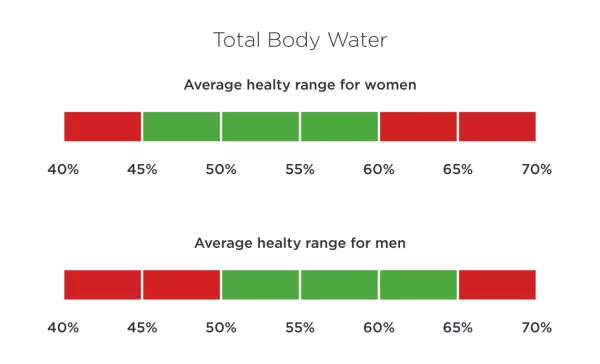 |
Bone MassThe predicted weight of bone mineral in your body. While your bone mass is unlikely to undergo noticeable changes in the short term, it’s important to maintain healthy bones by having a balanced diet rich in calcium and by doing plenty of weight-bearing exercise. | 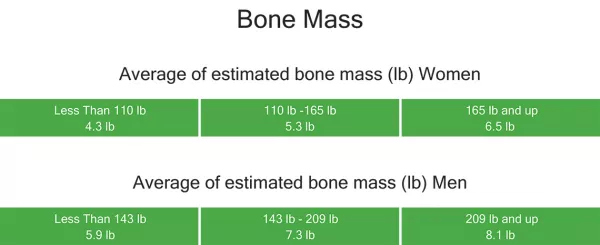 |
Segmental Muscle MassMuscle mass rating for five body segments: the core abdominal area, arms and legs. Monitoring the muscle mass of each of your arms and legs and core abdominal area will help you see and understand the impact of your training program over time. You can also use this information to correct muscle imbalances and avoid injury. |
Segmental Body Fat PercentagesBody fat percentages for five body segments: the core abdominal area and each arm and leg. Monitoring the body fat percentage of each of your arms and legs and core abdominal area will help you see and understand the impact of your training program over time. |
SMI (Skeletal Muscle Index).The ratio of the muscle in your arms and legs to your height. As we age we lose muscle mass. This can lead to a condition known as sarcopenia. In older people this has substantial tolls in terms of morbidity, disability, and increased costs of health care. A SMI value of 7.23 or higher is desired for men, and 5.67 is desired for women. Maintaining an active lifestyle along with specialized dietary strategies may prevent or delay the onset of this condition. |

